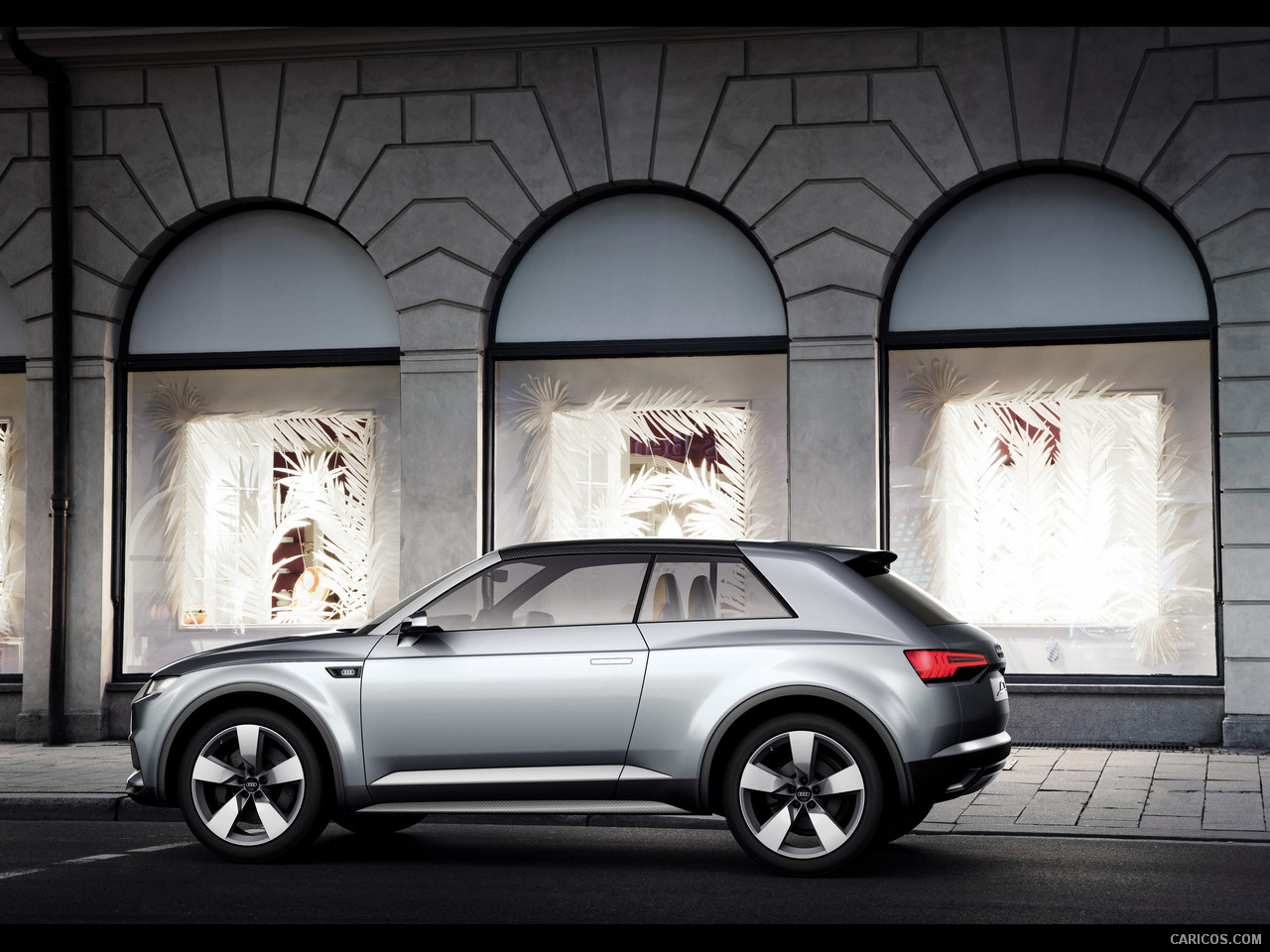
The new 2012 Audi Crosslane Coupe Concept introduces new online services under the key word Audi connect. A completely new feature is the “Escape Manager” – a program passengers can use to review and comment on the routes they are driving for their friends.
2012 Audi Crosslane Coupe Concept Exterior. The new Audi Crosslane Coupe body design comes across as powerful and striking, and it already provides a foretaste of the design language of a future generation of Audi Q models.
Small, individually controllable light-emitting diodes generate all lighting functions, and microreflectors enable their precise positioning. The bumper incorporates large, mainly smooth-surfaced air intakes. Through two narrow openings in the front lid it is possible to glimpse the upper aluminum members of the Multimaterial Space Frame.
The horizontal edges are the dominant feature above the wheels. The low greenhouse tapers into a very flat C-post, emphasizing the coupé-like character of the Audi crosslane coupé. The doors extend a long way down thanks to the space frame design, which allows very low sills. The doors open to reveal the aluminum structures of the Multimaterial Space Frame.
2012 Audi Crosslane Coupe Concept Interior. The narrow gap dimensions and three-dimensional surfaces reflect Audi’s uncompromisingly high quality standards. The dominant interior material of the Audi crosslane coupé is CFRP, which is used in a number of different variations. On the dashboard cowl, for instance, the composite fibers are all aligned in a single direction; this unidirectional arrangement is a new departure in the automotive sector. The CFRP parts are slightly lighter in color in some areas and darker in others, an effect achieved by different clear coat applications.
2012 Audi Crosslane Coupe Concept Engines and Transmissions. The Audi crosslane coupé sprints from zero to 100 km/h (62.14 mph) in 8.6 seconds, and in pure electric mode takes 9.8 seconds. The car’s top speed is 182 km/h (113.09 mph). Its average fuel consumption is a mere 1.1 liters per 100 km (213.81 US mpg) and it emits 26 grams per km (41.84 grams per mile) of CO2. The lithium-ion battery has an output of 17.4 kWh, sufficient for an operating range of around 86 km (53.44 miles) in the electric mode.
The combustion engine is a purpose-developed three-cylinder TFSI with a displacement of 1.5 liters, delivering an output of 95 kW (130 hp) and 200 Nm (147.51 lb-ft) of torque. The three-cylinder engine is coupled to an electric motor (EM 1), which acts primarily as a starter and an alternator. It develops an output of 50 kW (68 hp) and 210 Nm (154.89 lb-ft) of torque. Electrical traction is provided by the second electric motor (EM 2) developing 85 kW (116 hp) and 250 Nm (184.39 lb-ft) of torque. The transmission makes it possible to connect the combustion engine complete with alternator to the remainder of the drivetrain by means of a claw clutch.






0 comments:
Post a Comment